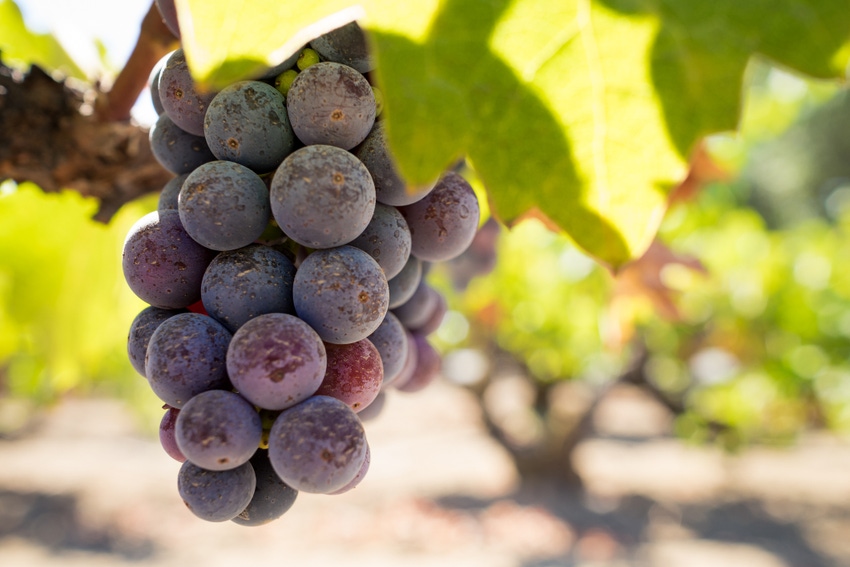
For the first three weeks or so, the 2016 harvest progressed steadily and smoothly for Lodi area grower Tom Hoffman, who grows 25 varieties of wine grapes near Acampo, Calif. Then, in mid-September, sugar development in two of his later-maturing varieties – Malbec and Petite Sirah – began to stall.
“The grapes were stuck at 23º Brix for about three weeks before eventually climbing to the 24 º Brix required by the wineries,” he says. “Sugar levels developed normally in the white varieties, which came off the vines well, and in the early reds. But, it took a while for the later reds to get over the hill.”
He reports other growers in the area were in the same position, including those with Petite Verdot and Cabernet Sauvignon, who also had to wait for sugar readings to reach the proper ºBrix.
Other than the generally cooler-than-usual weather during harvest he can’t explain either that delay or another unexpected development. “The grapes matured at lower levels,” he says. “Everything was there – the acidity and the tannins – except the sugar.”
Hoffman started harvesting his 180 acres of grapes on Aug. 20 – a day later than last year – when he began picking his Chardonnay. He picked his Sauvignon Blanc on Sept. 23, to complete his white harvest and finished with the last of his red grapes – Zinfandel and Cabernet Sauvignon – at the end of the first week of October.
Hoffman represents the fifth generation of his family to farm this area along the Mokelumne River in San Joaquin County He’s been growing wine grapes since replacing his table grape vineyards in 1987.
The bulk of his production — Chardonnay, Sauvignon Blanc, Malbec, Petite Sirah and Zinfandel – is sold to other wineries. Hoffman reserves the rest of his grapes, which range from Chenin Blanc and Pinot Grigio to Cabernet Sauvignon, Charbono, Grenache and Temperanillo, for his family’s Heritage Oak Winery wines.
Hoffman has been pleased with the tonnage of his white and his red grapes this year. The red varieties produced an average-size crop. But that was about double the size of his 2015 crop, he reports.
“Overall, production has been better than average this year,” Hoffman says, “The quality is there, as well. It’s been good with both the whites and reds.
He attributes that to favorable growing conditions throughout the season. They included dry weather at bloom and a good fruit set. Adequate soil moisture to start the season allowed Hoffman to delay his first irrigation until late May.
Pressure from powdery mildew was light this season as were insect pest numbers. They included some leafhoppers that showed up in their usual areas in July.
As has happened before, tissue sampling revealed low potassium levels in some fields of his later-maturing varieties. That could reflect the crop load on those vines. Also, since potassium aids fruit maturity, he notes, that could have contributed to the delay in sugar development in those grapes.
“This year’s harvest went pretty well,” he says. “Our labor supply remains fairly reliable, and we had no trucking problems shipping grapes to the wineries.”
About the Author(s)
You May Also Like




